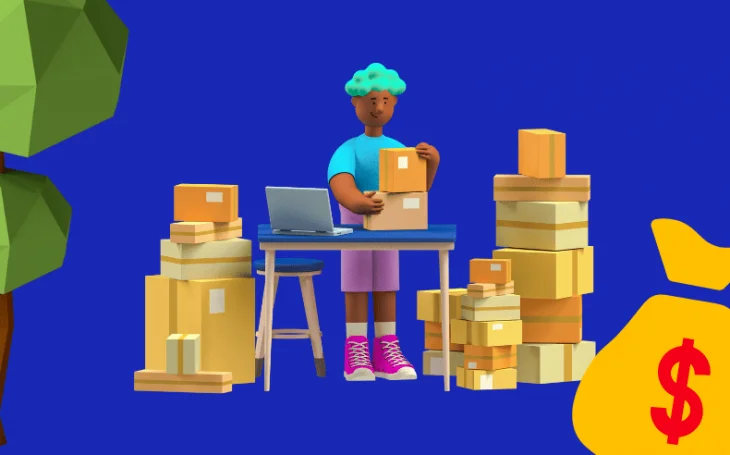How Lending Companies can disburse the loan in 10 mins



Technology has woven its magic in the 21st century across innumerable sectors, many of which have benefited from different aspects of their businesses: customer outreach, resource planning, and speed of product/service delivery to name a few. Along these lines, the burning question among banks and NBFCs (non-banking financial companies) is – when you can get your food, grocery, insurance in less than 10 minutes these days, the question arises – why not loans?
We talked to Gorav Gupta, Founder and Director at DigiMoney Finance Private Limited about how it is possible to scale such an implausible feat. Tune in to the episode or read our conversation below to learn how to disburse the loan in 10 mins.
Mani Parthasarathy
Hi Gorav, and thanks a lot for your valuable time. Can I start by asking you, your take on the traditional way of lending?
Gorav Gupta
The traditional way of lending that most of us have been witnessing over many years is a manual and time-consuming process that comprises 3 predominant steps – application & KYC, underwriting, and disbursement. Traditional lending also follows the 4 C’s approach – Character, Collateral, Credit, and Capacity – which can get quite cumbersome, subjective, and not driven based on data.
What was the reason behind starting Digimoney?
Let me go back to 2008-09 when we started AccSource, our other venture that is into KPO (Knowledge Process Outsourcing) business with an Australian market focus. After the company was set up and settled, we turned our eyes to India to try and take advantage of the millennial demographic, which is 34% of the current workforce. After scoping for sectors to venture into, we zeroed in on Tech Finance, one of the most happening places these days. The main motive behind starting Digimoney is to make financial services more accessible to individuals and SMB’s that have limited access to finance.
Gorav, what do you think are the challenges plaguing traditional lending services?
I haven’t been a provider of traditional finance, but I’ve been a user of the service. I’d like to highlight 3 significant challenges here:
- Extensive Paperwork: So you have loan application documents, KYC requirements, etc. For simply opening a bank account, customers need to run through and sign stacks of papers.
- Prolonged Waiting Time: Since traditional lending relies on data not readily available like credit score, lending history, salaries, bank balance, etc. it takes quite a bit of time. Customers only want to know one thing in lending – whether their application is accepted or rejected.
- Human Bias & Manual Judgement: Traditional finance also relies on the physical presence of the individual at a branch to give judgment. That’s why when you go to one lender, your application (based on paperwork/presence) may be rejected, and when you go to another lender, your application may be approved.
These points trigger some curiosity: how can I as a traditional lender – bank or NBFC turn digital?
I’d say the first step towards switching to digital finance is embracing e-KYC technologies which use a digital onboarding process as opposed to a pen-and-paper approach. C-KYC, which uses blockchain technology to centralize all customers’ data, and is managed with no duplication and no repetition.
Can you please tell us how a digital onboarding process works?
Digital onboarding has revolutionized the client onboarding process by enabling the 3 A’s – anyone, anywhere, and at any time. Onboarding should be available at the ease of the customer. Gone are the days when you can expect customers to come to a branch between 9 to 5, and make them fill out tonnes of documents to get their loan disbursed. Millennials want everything instantly, no time for filter coffees anymore! People want that convenience, which is why the Swiggies, the Zomatos, and the Ubers have been successful and thriving in this market.
Mani Parthasarathy
What do you think about digital onboarding being cost-effective, Gorav?
These days, digital onboarding is not really an expensive affair anymore. We ourselves use a system that is built with a complete tech process because of which we are able to lend money in such a short period of time. I believe it’s the understanding of the technology that is more important than the cost.
Mani Parthasarathy
How does digital onboarding help reduce the customer acquisition cost for NBFCs?
Look Mani, technology is a double-edged sword – it’s a brilliant enabler, but it comes with a cost. The only way to reduce the cost of technology adoption is to make it effective. Eg. Let’s assume a tech application in which 100 applications come in. Some applications may get stuck at KYC due to insufficient data and some may not be eligible for credit, and only 5% may actually go through to disbursement. Here we mustn’t look at the absolute cost of processing an application, rather we have to consider the composite cost of completing 5 disbursements. So the ratio of the number of applications to the number of disbursements becomes extremely crucial.
Say a person on a digital lending platform applies for a loan and goes straight through to disbursement, what would be the cost of processing the application? Can you throw a number?
The absolute cost of processing just 1 successful application doesn’t cross INR 300.
Mani Parthasarathy
That’s it?! It’s funny that in traditional lending, just the petrol cost to go to the branch and back would be INR 150-200!
Yes, that’s how much digital lending has become cost-effective.
The API buzzword is going on in the FinTech circles – can you talk a bit about this?
API (Application Programming Interfaces) simply put, is something that connects 2 different systems, or passes data from one system to another for a certain use. The entire gamut of loan origination can be automated from KYC verification to disbursement using various APIs. For example, take e-KYC. Customers can get their identity and address verified through various government-issued documents like Aadhar ID, Passport copy, etc. APIs, which are part of digital lending software and systems, transfer in real-time the input given from the customer to the respective government database, fetches data from that customer, and use that info to perform e-KYC. There are APIs used for underwriting, execution of loan agreements, disbursement & payment collection.
Mani Parthasarathy
What kind of regulatory challenges do you think NBFCs face?
Gorav Gupta
Smaller NBFCs don’t face many challenges, but systematically important NBFCs have a lot of compliance requirements. If the Loan Management Systems in bigger NBFCs are designed to auto-generate info required for regulatory filing, then that’s a best-case scenario.
There’s a new scale-based regulation from RBI that could bring some challenges since it involves a new asset class called The Special Mention Accounts (SMAs). I don’t think the existing NBFCs are geared to take on and report such accounts, but if their LMS is scalable enough to support the generation of such reports, then it’s okay. For eg., we use the LMS powered by CloudBankin, and it was just a configuration that modified our reporting norms to meet this regulation.
Mani Parthasarathy
Gorav, how can lenders balance the expectations between traditional and millennial borrowers?
Only if lenders minimize the length of the process taken to originate and disburse loans, this can be achieved. I’ve noticed many institutions asking for n-number of data points through their websites or apps prior to the loan application. Are they really using these many data points to check creditworthiness?
Millennials can easily fill out these forms/fields, but older people and those from rural India can’t be expected to labor through so many questions. People like my father, who are unfamiliar with digital lending processes, will expect to fill out only relevant information to avail of loans. So if lenders are able to minimize this loan origination process, then the opportunities across an older demographic and rural India are bountiful.
Mani Parthasarathy
What is the best turnaround time that you’ve achieved to disburse a loan?
Before diving into that question, let me share with you why we’re able to lend so quickly. We have built our onboarding as a paperless, low-upload, and real-time process. Most of the data used for making a credit decision is pulled using data fetch and cross-verified with government databases. Once the onboarding is done, we use alternate credit scoring and bank statement analyzer to build a data-rich rule engine (which contains several data points) to take a faster-than-normal decision.
How many downloads of the app do you have now, Gorav? What’s the secret of its success?
Gorav Gupta
After launching in Feb 2021 and expanding to other cities in South India from April, we are now present in 8 cities and over 90k downloads, although the number of loan applications through the app is over 120k. We’re looking to touch 100k downloads very soon! I can attribute its success to a bunch of reasons:
- Getting hits through word-of-mouth and some digital media marketing. App user-friendliness has driven many of our clients to refer us.
- The older demographic has also found the app quite easy to navigate through and use.
- Low rates of interest.
- Very low processing fees.
- A rock-solid customer care team that manages the toll-free number and email support.
Mani Parthasarathy
How much has technology helped Digimoney reach its milestones?
Immensely. It has accelerated our growth multifold. Here are 2 main points:
- Seamless Customer Onboarding: You know, we ask for only the DoB and pan card details in phase 2 of the app. The rest of the data is fetched from government databases.
- Larger Audience Capture: Reaching out to and capturing people from tier-2 and tier-3 cities and older demographics through an easy-to-use app has also contributed. If I need to expand to pan-India, it will take me only 15 minutes.
Mani Parthasarathy
How is credit evaluation done on the app? How have you reduced your NPAs?
Setting the standard (for underwriting, disbursement) is a one-time process. We’ve designed a proprietary rule engine that has helped us keep zero NPAs over the last 9 months. Our credit evaluation process comprises 3 types of data – bureau, alternate, and bank statement analyzer. All data points are generated using AI and ML tools which feed into the rule engine and risk profile of the customers.
Mani Parthasarathy
What kind of alternate data points do you use?
We use many service providers for e-KYC, payments(where we use their e-NACH, e-MANDATE collection APIs), and alternate data. But the most important one is the loan management system, for which of course we use CloudBankin. The best part is that we’re able to customize it to our requirements, be it demographic, regulation, or interest rate change.
Mani Parthasarathy
How do you differentiate from your competition?
We’re a FinTech and an NBFC, which makes us unique, but our focus has always been technology. Other operational aspects where we’d like to differentiate ourselves are faster turnaround time, low interest rates and processing fees, and top-notch customer service.
What is your scope with regards to loan aggregators, Gorav?
Mani, we are slightly averse to concepts like co-lending and providing FLDG guarantees. because the associated costs are high. These initiatives come at a cost, and the moment lending costs go up, the intent to repay decreases significantly (higher NPAs). Right now we’re not partnered with any aggregators, but it may happen in the future.
Mani Parthasarathy
How would you describe an efficient user flow
Gorav Gupta
It’s simple: Customer registration → KYC → Credit Underwriting → Offer → e-Mandate → Loan Agreement → Disbursement
What about tools to prevent fraud prevention, Gorav? What do you think?
Gorav Gupta
We’re not using any tool that can actually prevent Fraud, Mani. But fraud prevention is in-built into the process itself. Actual tools to prevent fraud can easily be understood and manipulated by fraudsters so what I think could help is if you have a cross-verification check at each step of the loan origination process. I’ve heard of Closed User Groups (CUG) at big banks to help weed out fraudsters, but I think people can easily game the system.
Frequently Asked Questions
What are the 6 steps of loan process?
The loan process or lending process or loan life cycle includes the following stages The first stage is loan origination which includes the following steps Loan Application - borrower’s data is collected Loan Processing - borrower’s identity is processed and validated. Underwriting - borrower’s risk percentage is assessed. Loan Approval/Rejection - lender decides whether to approve or reject the application. Loan Disbursement - loan amount is disbursed by the lender after approval. The second stage is the loan management where we encounter Loan Repayment - collection of loan repayments in instalments. Loan Closure - after repayment is complete, the loan is closed. With the help of CloudBankin, lenders can manage their portfolio in a paperless way.
What is the loan life cycle?
The loan life cycle can be explained as the timespan with a series of stages in which the borrower applies for a loan till it is paid off with interest to the lender. In other words, it covers all loan processes from loan origination and loan management until closure.
Is the LOS Positioned to Meet Growing Technological Demands?
Yes. 100%. Here’s how it is positioned to meet the growing need for technology: 1. Reduces financial institutions' dependency on physical branches. 2. Our software is capable of handling large amounts of data. 3. Automation allows faster and more efficient data processing. 4. Eliminates wasting of time, allows quicker decision making and reduces operating costs. 5. Security increases by introducing APIs and biometrics like face match, video KYC, etc., for verification checks. 6. Able to disburse more loans to people with faster automation of their digital lending system. 7. Streamlines a customer's onboarding process. 8. Enhancing user experience. 9. Borrowers can apply for loans from any place, anywhere and anytime. 10. Analytical reporting and dashboards for all-round view for lenders. 11. Disbursement of loans within minutes.
Related Post

An Introduction To Credit Bureaus
What is a Credit Bureau?A company which collects information relating

Enhancing Customer Experience through Loan Origination System
Digitalization has shaken up the lending industry over the last

Why Knowing About Them Matters: A Complete Guide to Credit Bureaus In India
Introduction In a world where access to credit can make
- Email: [email protected]
- Sales Enquiries: +91 9344243151
- HR Enquiries: +91 9080996576
Quick Links
Resources
© 2024 LightFi India Private Limited. All rights reserved.
(Formerly known as Habile Technologies)
After smartphone penetration, people are not watching their SMS at all. They use SMS only for OTP related transactions. That’s it.
But What can a Lender see in your SMS after you consent to them?
Lender can see income, expenses, and any other Fixed Obligation like (EMIs/Credit Card).
1) Income – Parameters like Average Salary Credited, Stable Monthly inflows like Rent
2) Expenses – Average monthly debit card transactions, UPI Transactions, Monthly ATM Withdrawal Amount etc
3) Fixed Obligations – Loan payments have been made for the past few months, Credit card transactions.
It also tells the Lender the adverse incidents like
1) Missed Loan payments
2) Cheque bounces
3) Missed Bill Payments like EB, LPG gas bills.
4) POS transaction declines due to insufficient funds.
A massive chunk of data is available in our SMS (more than 700 data points), which helps Lender to make a credit decision.
#lendtech #fintech #manispeaksmoney